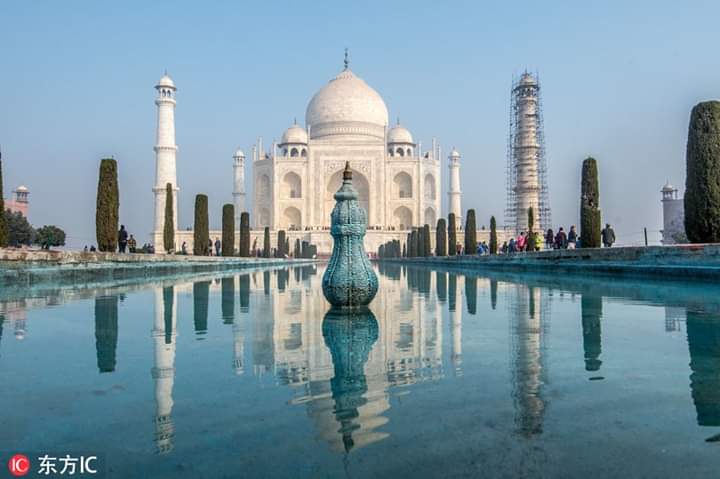China and India relations have moved into the fast lane of development after the informal meeting between President Xi Jinping and Indian Prime Minister Narendra Modi this April in the central Chinese city of Wuhan, which is believed to inject impetus for bilateral relations and promote more frequent multi-level exchanges, according to experts at a seminar held on Tuesday in Beijing.
To move bilateral cooperation forward, both #China and #India should consolidate their mutual understanding, increase connectivity, and foster a closer development partnership, Lou Chunhao, deputy director of Institute of South Asian Studies at the China Institutes of Contemporary International Relations (CICIR), said at a seminar jointly held by Center for China and Globalization (CCG), the Himalayan Consensus Institute, and UNDP China.
Specifically, cooperation among countries alongside the Himalaya area is essential, which is expected to develop major infrastructure projects and enhance civil exchanges, such as the possible China-Nepal-India Economic Corridor, all of which will benefit from intensive cooperation, Lou said.
“People-to-people exchange is the key to building sustainable dialogue between the two countries, especially for scientific cooperation between the two countries’ universities,” added Nirupama Rao, former Indian Ambassador to China.
Thanks to the geological advantages and China’s favorable policy to attract international students, an increasing number of Indian students prefer to study in China or learn Chinese language at local Confucius institutes. At present, more than 20,000 Indian students are learning in China, which creates a foundation for China-India cultural exchange and shared values, according to Anushka Prasad, founding director of New Delhi-based NGO China-India Foundation and a Schwarzman scholar at Tsinghua University.
While relatively small when compared to the nearly 200,000 Indian students in the United States, which is as 10 times the number of those studying in China, the prospect of Indian students in China still have great potential, James Zhan, president of Tata Group China, noted.
The personal experiences of the two countries’ younger generations is an indispensable factor to eliminate misinterpretation and deepen understanding, Zhan emphasized.
In addition to civil exchanges, cities can also play a role in improving bilateral relations. For example, China’s Kunming and the Indian city of Kolkata established sister-relations in 2013 to facilitate intimate cooperation between local authorities, according to Nicholas Rosellini, the UN resident coordinator.
Rosellini also suggested areas for the Chinese and Indian governments to improve ties, including ecological landscape and ecosystem preservation, water cooperation initiatives, global jointed interests, and integration with the Belt and Road Initiative (BRI).
Over the years, China and India have witnessed more frequent high-level exchanges, enhanced trade ties, closer people-to-people contacts, and increased cultural interactions.
With $84.4 billion worth of bilateral trade volume in 2017, China is India’s largest trading partner, and from January to July this year, the number reached nearly $55 billion, up by 15 percent on a year-on-year basis.
China attaches great importance to the trade balance with India and has lowered tariffs on certain Indian goods exported to China, increased imports of sugar, non-Basmati rice, and other agricultural produce from India, facilitated the export of Indian medicines to China, and further improved the trade structure, according to Xinhua News Agency.
Currently, some 14 pairs of friendship cities have been established and 42 flights traveling between the two countries are available per week. Yoga, Darjeeling black tea, and Bollywood movies are popular among Chinese youth. In return, India has also seen a craze of learning Chinese language. About 20 universities in India currently offer Chinese language courses and about 20,000 Indians are now studying Chinese, according to data released by the Chinese Embassy in India
Accounting for 35% of the world’s population and 20% of global GDP, China and India have strong economic complementarities and great potential for cooperation in trade, infrastructure, information technology, cultural tourism, medical health, and other fields. Both sides should raise economic and trade cooperation to a higher level to benefit the two peoples and the world, Luo Zhaohui, Chinese Ambassador to India, said in a previous interview with People’s Daily.






